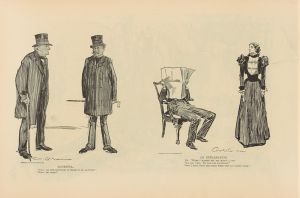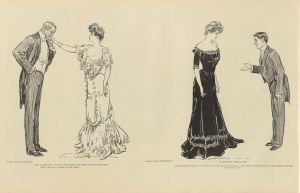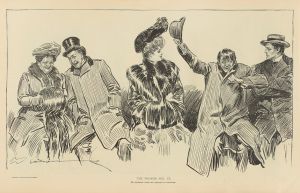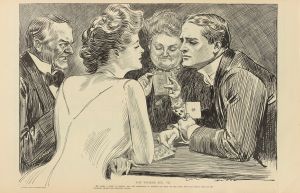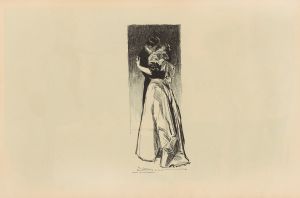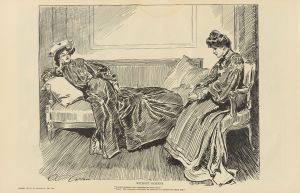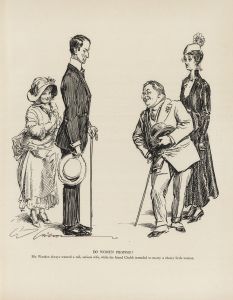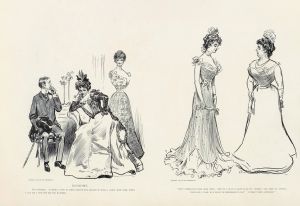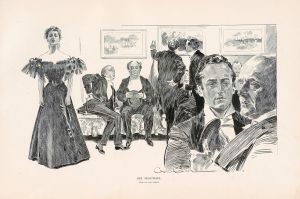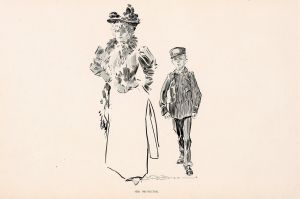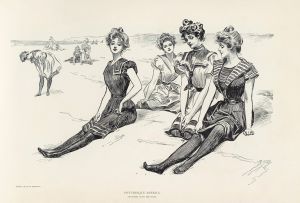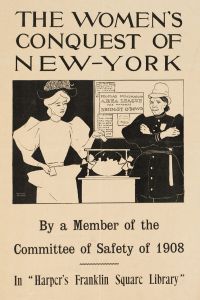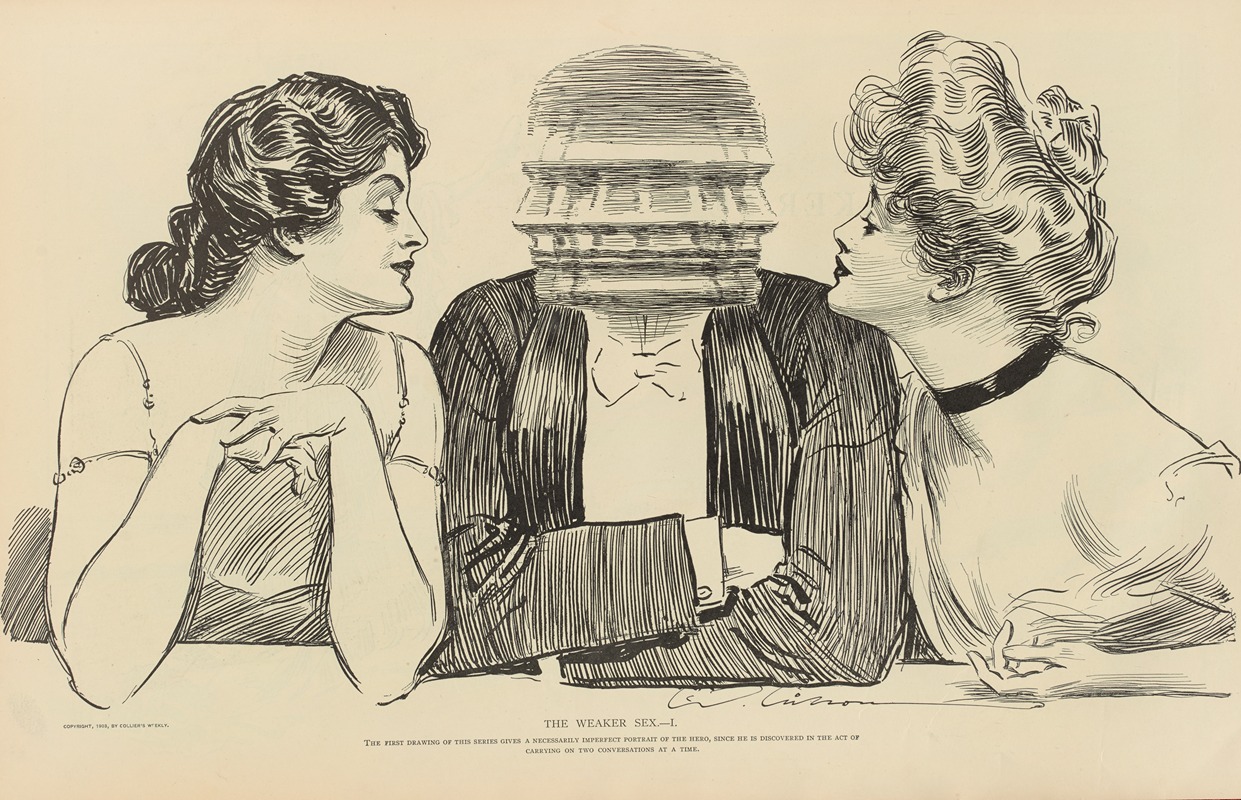
The weaker sex.—I
A hand-painted replica of Charles Dana Gibson’s masterpiece The weaker sex.—I, meticulously crafted by professional artists to capture the true essence of the original. Each piece is created with museum-quality canvas and rare mineral pigments, carefully painted by experienced artists with delicate brushstrokes and rich, layered colors to perfectly recreate the texture of the original artwork. Unlike machine-printed reproductions, this hand-painted version brings the painting to life, infused with the artist’s emotions and skill in every stroke. Whether for personal collection or home decoration, it instantly elevates the artistic atmosphere of any space.
"The Weaker Sex.—I" is an illustration created by Charles Dana Gibson, an influential American graphic artist best known for his creation of the "Gibson Girl," a representation of the idealized American woman at the turn of the 20th century. Gibson's work, including "The Weaker Sex.—I," played a significant role in shaping societal perceptions of gender roles during this period.
Charles Dana Gibson was born on September 14, 1867, in Roxbury, Massachusetts. He studied at the Art Students League in New York City and began his career as an illustrator in the late 1880s. Gibson's illustrations were widely published in magazines such as Life, Harper's Weekly, and Scribner's, where they gained significant popularity.
"The Weaker Sex.—I" is part of a series of illustrations that humorously depict the interactions between men and women, often highlighting the social dynamics and gender roles of the time. The title itself, "The Weaker Sex," is a reflection of the prevailing attitudes towards women during the late 19th and early 20th centuries, a time when women were often perceived as delicate and in need of protection. However, Gibson's work often subverted these stereotypes by portraying women as confident, independent, and sometimes dominant figures.
In "The Weaker Sex.—I," Gibson employs his characteristic style, which combines fine lines and detailed shading to create expressive and dynamic characters. His illustrations often feature elegant women with an air of sophistication and poise, embodying the "Gibson Girl" ideal. This idealized image of women was characterized by beauty, intelligence, and self-assurance, challenging the notion of women as the "weaker sex."
Gibson's work, including "The Weaker Sex.—I," was influential in the cultural landscape of the United States during the late 19th and early 20th centuries. His illustrations were not only popular in magazines but also inspired fashion, with women emulating the style and demeanor of the "Gibson Girl." The popularity of his work contributed to the evolving conversation about gender roles and women's rights during this era.
While "The Weaker Sex.—I" is a product of its time, reflecting the social norms and attitudes of the early 1900s, it also offers a glimpse into the shifting perceptions of gender. Gibson's illustrations, with their subtle humor and nuanced portrayal of women, provided commentary on the complexities of gender relations and the changing role of women in society.
Charles Dana Gibson continued to work as an illustrator until his retirement in the 1930s. He passed away on December 23, 1944, leaving behind a legacy that includes a vast collection of illustrations that continue to be studied and appreciated for their artistic merit and cultural significance. "The Weaker Sex.—I" remains a notable example of Gibson's work, illustrating his ability to capture the essence of an era through his art.





